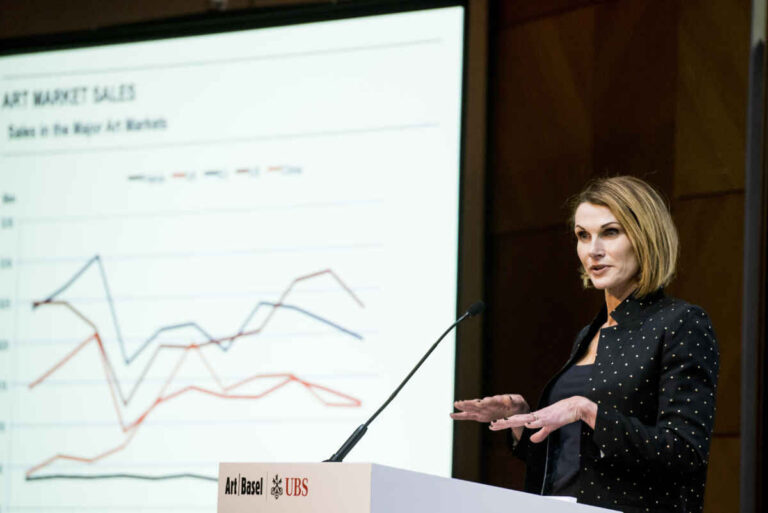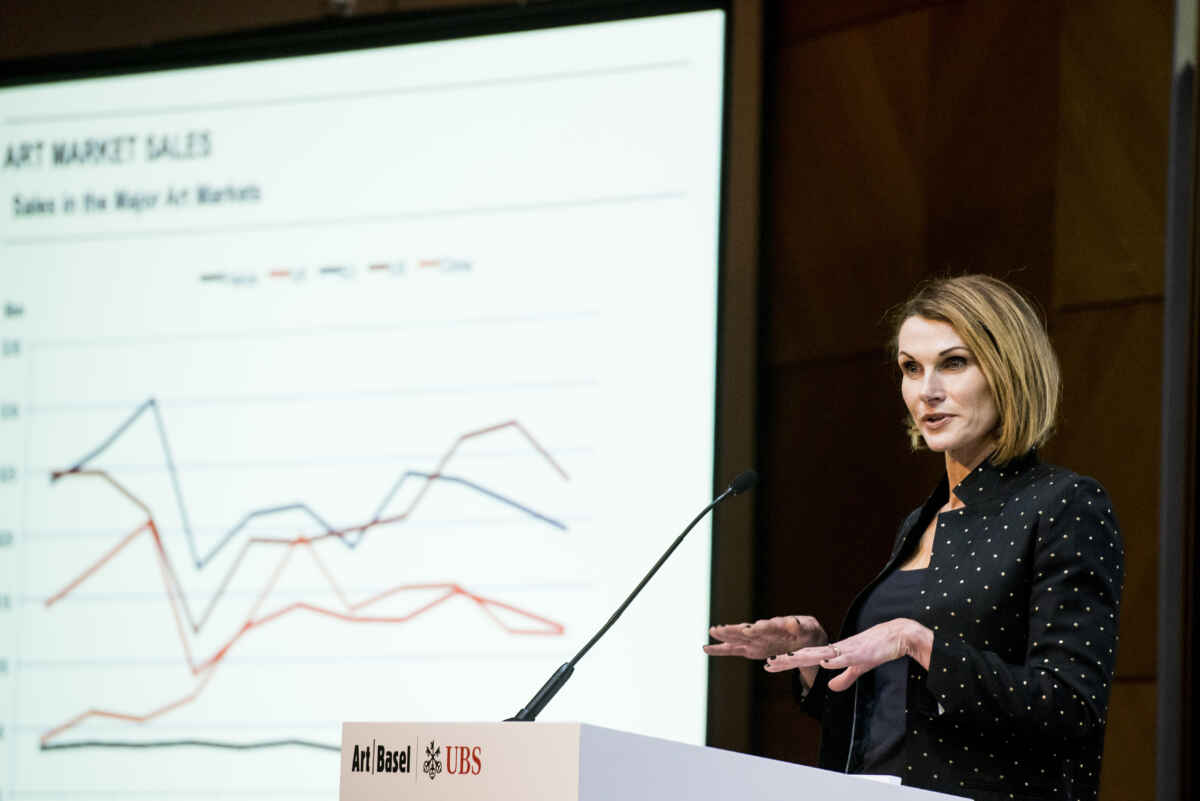
The UBS and Art Basel Gobal Art Market Report 2020 has 384 pages. The research by Arts Economics presents data collected from dealers, auction houses, collectors, art fairs, art and financial databases, industry experts and others involved in the art trade. It covers the global art and antiques market in 2019.
Chapter 1 provides an overview of the global market in 2019. Some key findings: While the overall market cooled in 2019, considerable resiliency remained in some sectors, especially in European art markets. Global sales of art and antiques reached an estimated $64.1 billion in 2019, down 5% year-on year, returning the market just above the 2017-level. The three major art and antiques markets, the US, the UK and China accounted for 82% of global sales, down by 2% year-on-year. The global art and antiques market employed 3 million people in 2019.
Chapter 2 focuses on dealers and galleries, analyzing sales and other key indicators in different value segments and sectors of the market, as well as presenting an analysis of important areas such as profitability, inventories, financing and buyers. Among the key findings are the numbers for sales in the gallery and dealer sector, which the report estimates to have reached $36.8 billion in 2019, a growth rate of just over 2% year-on-year. 84% of transactions in the dealer sector were for prices below $50,000. These sales represented 27% of the total value of sales in 2019, down 10% from 2019, with more value shifting to the higher end. The share of sales to new buyers increased 5% year-on-year to reach 34%. New buyers accounted for 40% of the sales of dealers with a turnover less than $500,000 versus 26% for dealer with total sales in excess of $10 million.
Chapter 3 looks at the auction sector, analyzing key trends in sales by region and value segment. It presents a comprehensive analysis of some of the principal fine art auction sectors, describing their performance in terms of sales, regional market share and price distribution. Among the key findings is the fact that public auction sales declined, but private sales increased. Global auction sales decreased 17% in value year-on-year. Post-War and Contemporary art the the latest sector of the fine art auction market in 2019, with a share of 53% of global fine art auction sales by value. Sales reached $6.1 billion, a decline of 10% year-on-year.
Chapter 4 provides a brief overview of art fairs, reporting on sales, attendance, exhibitors, costs and other key variables. It includes key findings from high net worth (HNW) collector research in relation to attendance at fairs and other events. It also considers some of the wider issues related to the environmental impact of art fairs and the sustainability of the art market. Art fair sales reached an estimated $16.6 billion in 2019, an increase of less than 1% year-on-year. According to the dealers, 15% of art fair sales were made before the fair, 64% during the fair and 21% after the fair as a direct result of exhibiting at the fair. Fairs accounted for 30% of sales for dealers with a turnover of less than $500,000 per year. For high end dealers with over $10 million in annual sales, art fair sales represented 47% of annual sales. High net worth (HNW) collectors reported attending an average of 39 art-related events in the last 12 months, with art fairs making up 18% (or seven per year) of those, on par with visits to gallery exhibitions. Non-commercial events were still the most attended, with an average of 13 museum exhibitions attend by collectors.
Chapter 5 looks at sales in the online art market, reporting on its size and key structural features. The chapter focuses on e-commerce in the dealer and auction sectors and presents findings on distance and pricing in online transactions. It also provides insights into how HNW collectors interact with the market online and through social media. Online sales of art and antiques were estimated at $5.9 billion in 2019, a decline of 2% year-on-year, accounting for 9% of global art market sales by value.
Chapter 6 provides a brief overview of world wealth, showing how changes in the size and distribution of wealth within and between regions are shaping trends in the art market. This chapter presents the results of a comprehensive survey of more than 1,300 HNW collectors in the US, UK, France, Germany, Singapore, Taiwan, and Hong Kong carried out in 2019 by Arts Economics in conjunction with UBS Investor Watch. Among the key findings of the survey is the fact that HNW collectors had an average of 76 works in their collections, with a median of 27. Woman had larger collections than men on average, with one third of women’s collections exceeding 100 works vs. 21% for men’s art collections.
Chapter 7 discusses the significant economic contribution the art market makes to the economies in which it operates in terms of employment and revenues as well as the support of a range of ancillary industries. It concludes by reviewing some of the key issues from the report that continue to affect the market in 2020. Among the key findings is the fact that the largest area of expenditure incurred by art dealers in 2019 was on art fairs, which reached $4.6 billion, a decline of 4% year-on-year, representing 23% of total ancillary expenditure.
These are just a few key findings of the 384-page UBS and Art Basel Global Art Market Report 2020. For the full report, check for instance the Art Basel website.
Beauty items at Amazon.com, Amazon.co.uk

The photograph shows the author of the Global Art Market Report 2020, Dr Clare McAndrew, at the 2020 Art Basel & UBS key findings presentation. Photo copyright © Art Basel.
This article is based on the Gobal Art Market Report 2020. For a better reading, quotations and partial quotations in this review are not put between quotation marks. Review added on March 7, 2020 at 14:28 German time.